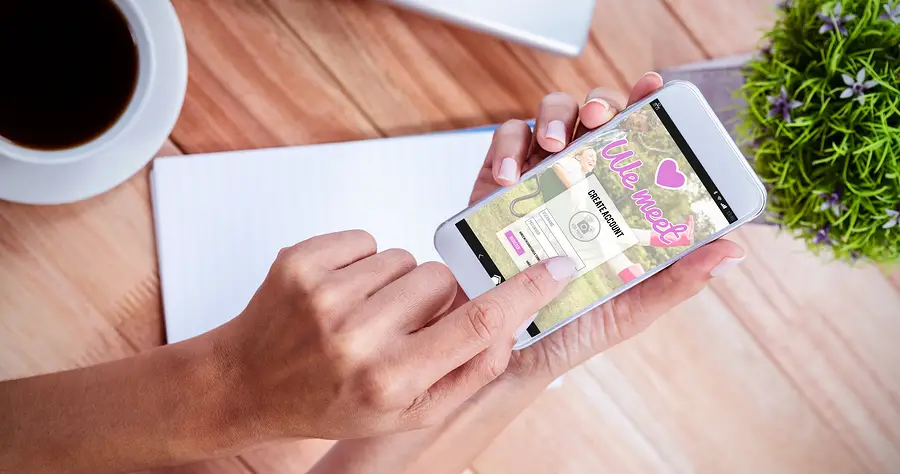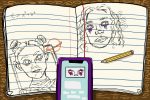Online dating is not a new concept, but its newfound efficiency is. The practice poses a difficult question: Why go through the trouble of getting all dolled up just to see if you hit it off with a stranger in the expensive bar that just opened, when you can swipe right on Tinder (or any other of the millions of dating apps) after judging someone’s profile pic in your pajamas?
Seems easy enough, but no amount of efficiency can make up for the lack of communication that will likely exist between you and your screen-peering partner. And even though most communication between the two parties occurs online, as opposed to in person, before hooking up, statistics show that sexually transmitted diseases (STDs), sexually transmitted infections (STIs) and other sexual health concerns are not a part of those conversations.
Perhaps you may think that the odds of meeting someone with a sexually transmitted disease or infection are slim, or that a condom is enough for one night of passion, but the reality is different. The United States has the highest rate of STDs, studies show, in comparison to other countries, with adolescents having the greatest risk of contracting a sexually transmitted infection.
Sixty-two percent of those individuals are under the age of 25, and, in a report by the Pew Research Center, the share of college-aged individuals (18-24) who use online dating has increased from 10 percent in 2013 to 27 percent in 2015. The most recent data from the Center for Disease Control and Prevention (CDC) reveals, in its 2015 report, that there has been an increase in the number of individuals who have contracted an STD, primarily chlamydia, gonorrhea and syphilis.
So, the reality is that you can be at risk of contracting a sexually transmitted disease or infection anywhere, and when you use an online dating site, you’re at a bigger risk. Still, dating sites aren’t “bad,” it’s just that many young lovers overlook their potential dangers because they’re convenient and exciting. Take 24-year-old Janelle’s anecdotal account of using Tinder as a “means to go after the kind of no-strings sex she wanted” after breaking up with her boyfriend of six years.
It’s absolutely necessary to first be informed about STDs and other sexual health concerns in order to understand what is at stake when you decide to have (unprotected) sex without the proper communication.
The CDC is a great website that can inform you on all the possible consequences of careless sex practices, such as having sex without a condom, drinking prior to having sex or — the big one — having unprotected sex with someone you just met online. MyMed.com also offers comprehensive information on STD screening, and answers questions like “how accurate are at home STD test options” and more.
“Adolescents, Technology and Reducing Risk for HIV, STDs and Pregnancy” is a great article provided by the CDC that covers everything from summaries of the different types of sexually transmitted diseases to demographics; it’s a great place to start getting informed.
There is no magical way to know whether or not someone has a sexually transmitted disease just from just looking at them or by reading that small excuse for an autobiography on their profile. So it’s absolutely necessary to bring the subject up before any type of sexual contact. Asking your partner to get tested may come with negative stigma, and it’s an even more daunting task to ask your partner for the actual screening results on paper, but it’s not a step you should skip in the (online) dating world.
Sure, your partner may feel offended, angry or upset because they think you don’t trust them, but your partner has an obligation to understand your concerns, just as you have the right to decline sex if you feel something is amiss. Think about it. Wouldn’t you rather send a text asking “Are you clean?” than receive one that says, “By the way, I tested positive for chlamydia, just thought you should know”? After all, a moment of pleasure can lead to a lifetime of struggle.
In fact, there should be absolutely no embarrassment or fear when asking for your partner’s screening results on paper. People lie and, in most cases, if Person A doesn’t know Person B, lying is much more probable, which basically describes the first meetings between online matches. Other times, someone may tell you that they’re clean, but the actual STD testing took place six months ago, so always use a condom when you’re not sure about your partner’s words.
Of course, it goes without saying that a serious discussion about sexual health entails two people. Don’t be a jerk and expect your partner to reveal this type of sensitive information (whether or not they are clean) without being honest yourself. This means getting tested and handing over the screening results if asked, but getting tested is something you should be doing regularly for your own sake.
It all comes down to honesty and open communication. Obviously, if you are romantically and sexually attracted to someone who is a carrier of a sexually transmitted disease or infection, sex will naturally follow. You just have to take the precautionary measures necessary to ensure that both of you are happy in the relationship. It all comes down to owning and being responsible for your own sexual health, no matter how you meet your partner, online or through people or at the local church.


















Thank you for this article.Before I was thinking that the dating apps was very cool thing.But now I understood that I was wrong.Also if you want to know more about dating apps I recommend you to read this.
[…] The Truth About STDs and Online Dating – studybreaks.com – May 03, 2017 · And even though most communication between the two parties occurs online, as opposed to in person, before hooking up, statistics show that sexually transmitted diseases (STDs), sexually transmitted infections (STIs) and other sexual health concerns are not a … […]